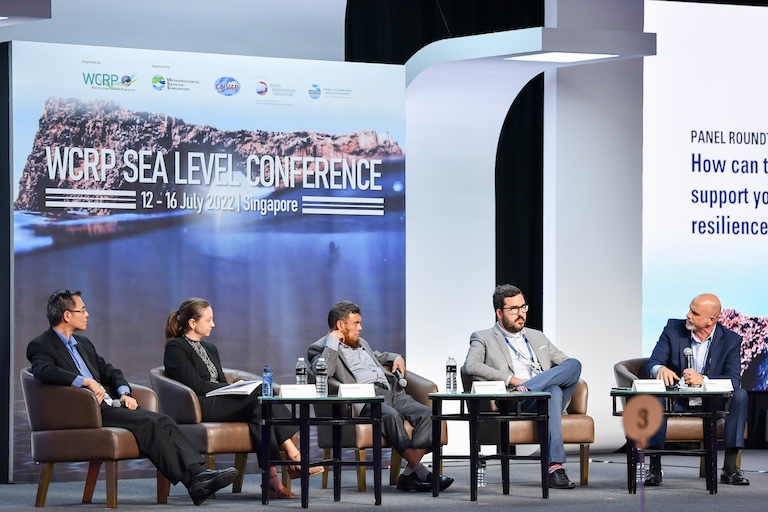News | October 31, 2023
NASA Team Partners with Global Group to Prepare Coastal Communities for Rising Seas

Guanabara Bay in Rio de Janeiro, Brazil. Rio de Janeiro is one of the communities that has expressed interest in working with PEERS and NASA on their inundation mapping project. Image credit: NASA/Augusto Getirana
The question: How can sea level science be used to address the effects of flooding and rising sea levels on coastal communities?
The answer: The NASA Sea Level Change Team is partnering with Practitioner Exchange for Effective Response to Sea Level Rise (PEERS) in one recent effort to help coastal communities prepare for the changes to come.
PEERS is a global collaboration that brings together coastal practitioners evaluating risks to communities susceptible to flooding from long-term sea level change and from weather events like typhoons.
The “practitioners” in this organization often include governments, companies and coastal land managers that develop and implement sea level policy.
PEERS was officially launched at the recent Adaptation Futures Conference in Montreal.
“The focus is on the needs of practitioners on the local, regional, and in many cases, national scales, alongside experts working to help us evaluate the threat posed by climate change in coastal zones,” said David Behar, the climate program director at the San Francisco Public Utilities Commission and chair of the Steering Committee of PEERS. “PEERS members will learn from each other while PEERS managers assess leading practices to help generate solutions and resilience programs to address coastal threats.”

One of the group’s priorities, Behar says, is to identify and develop tools specific to those needs, such as web-based interactive databases that project possible local effects of sea level rise.
“What we’re doing right now is reaching out to communities that may want these tools and saying that they’ll be available through work with PEERS,” he said.
In one project, PEERS is collaborating with the NASA Sea Level Change Team to develop inundation maps at no cost to practitioners that show potential flooding driven by rising seas, storms, and other hazards.
These maps can be used to pinpoint vulnerable areas and potential flooding sites on the coast under a variety of scenarios. They pull data from sources including NASA’s satellite datasets, measurements of water levels, and projections of future sea level rise by the Intergovernmental Panel on Climate Change.
“Inundation mapping is a first step in any understanding of vulnerability in a coastal zone,” Behar said. “And that goes for sea level rise and storm surge and typhoons and hurricanes because raising the height of the water, whether it’s temporary or permanent, causes flooding.”
Why it’s important: Tools like inundation maps can be costly for coastal communities to develop on their own. Making them more accessible through PEERS can help coastal managers in these areas better understand the effects of sea level rise.
And expanding the availability of NASA data can help communities begin planning for flooding and climate change.
Cities in Latin America and the Caribbean have begun reaching out to PEERS in hopes of piloting these inundation maps when they are launched. Meanwhile, PEERS has begun the process of converting sea level data into more understandable forms.
“One of [their needs] is to understand the science better,” Behar said. “So, we’re going to be setting up an actionable science working group within PEERS to attack the question of how we take the vast and dizzying array of projections of the future that exist in authoritative documents and create from them information that people can use in planning.”
PEERS also developed a webinar series called “Adaptation Pathways in Action” that reported practitioner experiences with a tool designed to help with long-term planning under uncertain future scenarios. Recordings of these webinars are available on the PEERS website, www.peerscoastal.org.
